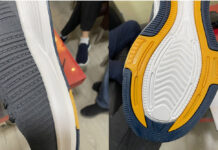The UV and EB energy-curable materials and products supply chain has been safely using raw materials, intermediates and finished products for over 50 years. Yet, a lack of understanding on how the energy-curable industry keeps workers safe and manufactures safe products (which are converted into packaging and articles used in markets from food to industrial cleaners) routinely is encountered.
We need to follow the approach which resulted in changing Radiation Curing to Energy Curables, which removed the general public misunderstanding that all radiation is bad, just as renaming the spectroscopic application in diagnostic medicine of Nuclear Magnetic Resonance to Magnetic Resonance Imaging (MRI) removed the stigma associated with the word “nuclear.”
For example, take a typical acrylate monomer tripropylene glycol diacrylate (TPGDA). (Author’s Note: Please do not wince if TPGDA makes you think of another monomer, TMPTA, which was listed in the Proposition 65 Regulation; it probably will be the subject of a future article.) In the raw material state, TPGDA is a viscous liquid that is an eye, skin and respiratory irritant and a skin and respiratory sensitizer. The supply chain manufacturers combine engineering and process controls, personal protective equipment and training on handling to minimize a worker’s exposure. These raw material hazards are much different when TPGDA is formulated into an energy-curable printing ink or coating and cured with UV or EB energy. The monomer reacts to form a polymer, whereby the significance of those hazards greatly are reduced. When extraction or migration tests are performed on the printed or coated film, very low levels of uncured TPGDA typically are found. The printing process and graphic specifications demand these monomeric chemicals are fully cured to prevent printing, stacking and rolling defects.
In the many food, pharmaceutical, cosmetic and personal care migration tests (on the unprinted or uncoated product-side) I have performed and reports I have reviewed, the levels of TPGDA and other acrylate monomers are found in parts per billion (ppb or 10-9 gram in 1 gram). There are similar results when doing a direct migration test on the cured printed / coated surface for consumer contact studies, although those may be in the low parts per million (ppm, 10-6 gram in 1 gram). These ppb/ppm levels also are found with other energy-curable materials, such as photoinitiators. These ppb/ppm levels of the example monomer result in low human-health exposure and eye, skin, respiratory or oral toxicity. Of course, the selection of the monomers, photoinitators, oligomers and polymers must comply with the end-use regulations and brand owner specifications.
An approach which could be effective with environmental regulators (US EPA and state EPA) is to relate the entire story of the UV/EB market size, safe handling of the raw materials and the scientific testing of the converted articles for consumer use.





